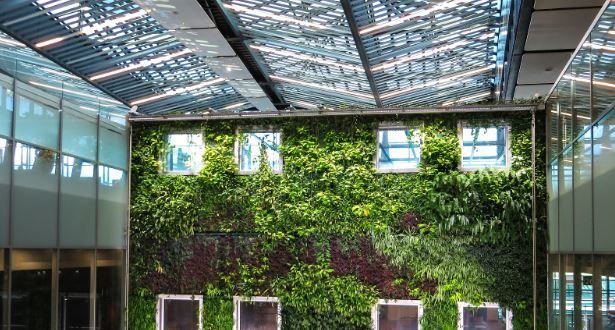To the casual observer, this might seem like the worst time to start building a new home. But that couldn’t be further from the truth. According to the U.S. Census Bureau, building permits are remaining steady in spite of challenges presented by the COVID-19 pandemic and a number of supply chain issues.
One thing that’s on everyone’s mind right now, outside of these issues, is the industry-wide push toward sustainability. How can home builders maximize energy efficiency in new home construction?
Recycled and Reclaimed Materials
The construction industry as a whole generates a massive amount of waste, with upwards of 30% of all the materials delivered to a construction site destined for landfills. In 2018, that accounted for 145 million tons of waste. One way to make construction sites more energy efficient while preventing significant waste is to opt for recycled or reclaimed materials whenever possible.
Concrete can be broken down and reprocessed into fresh cement or aggregate for new projects. Wood can be reclaimed, or broken down into other materials such as MDF or mulch. Metals and some plastics can be reused or directly recycled to create something new, with a much smaller carbon footprint than using virgin materials.
Insulation
Energy efficiency is often directly related to how well a home can retain heat in the winter and stay cool in the summer. An efficient HVAC system is part of this, but the often overlooked variable is how well the home is insulated. Putting loose insulation or rolls of fiberglass in the attic isn’t always sufficient for true energy efficiency anymore.
New design options have begun bonding insulation directly to pre-cast concrete forms. Not only are these more energy efficient in the long run, but the pre-cast section also reduces the amount of time it takes to complete a given construction project.
Energy-Efficient Windows
Windows — especially single-pane windows you find in older homes — are some of the worst culprits when it comes to energy efficiency.
Multi-pane windows are better for preventing a home from bleeding heated or cooled air, which will cause the home’s HVAC system to work harder. Some may even prevent UV rays from entering the home, so you can leave your blinds open and take advantage of all that natural light without worrying about the sunlight bleaching your furniture or causing damage to your home.
Green Energy
Green energy may be an industry buzzword, but it is also quickly changing the way we look at powering our homes. The sustainable architecture industry has been growing and thriving, rising in value from $75.26 billion in 2017 to $83.05 billion in 2018. In 2020, that jumped to $94.5 billion. And with the industry-wide focus on green alternatives and sustainability, it will likely continue to climb for the foreseeable future.
Incorporating green energy in home construction from the ground up will help construction companies find a niche in this new era of sustainability while promoting energy efficiency in new home construction.
Lean Construction
The principles of lean manufacturing may have been designed for factories, but some of them are just as valuable for the construction industry. At its core, lean construction is about the reduction of waste. While reducing physical waste — such as the discarded materials we mentioned earlier — is part of it, that is only a fraction of the places on an average construction site where you can begin to reduce waste.
From time wasted sitting around waiting for things to be completed, to materials or energy being wasted due to inefficient technology or techniques, this all falls under the purview of lean construction. These methods are usually found on larger commercial construction projects, but they could easily be scaled down for new home building projects.
Creating a Greener Future
The construction industry might not be the biggest offender when it comes to energy waste, but there are plenty of ways that we can tweak our existing methods and procedures to ensure it can be part of the solution rather than part of the continued problem.



